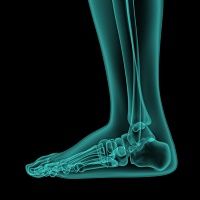Article
Bunions in Teens: Surgery vs. Conservative Approach
Author(s):
Surgeons and podiatrists debate the best management approach for adolescent hallux valgus (bunions), a condition that occurs in up to 30% of adolescents. Conservative management (including footwear modifications, orthotics, and analgesia) rarely prevents progression. But surgery (a general term that includes more than 100 different procedures) has been associated with a high likelihood of post-surgery recurrence or deformity.

Surgeons and podiatrists debate the best management approach for adolescent hallux valgus (AHV or bunions), a condition that occurs in up to 30% of adolescents. Conservative (non-operative) management—footwear modifications, orthotics, and analgesia—rarely prevents progression.
But surgery—a general term that includes more than 100 different procedures—has been associated with a high likelihood of post-surgery recurrence or deformity. Sub-optimal correction, excessive first metatarsal shortening, inadequate fixation, and non-union have also been problems. Researchers have published a systematic review to assess clinical and radiological outcomes following surgery for AHV in the Journal of Children’s Orthopaedics indicating that surgical outcomes have improved over the years.
The authors found that most literature on AHV is heterogeneous and retrospective. They identified 9 recent studies that enrolled 140 patients. In keeping with known statistics in AHV, girls outnumbered boys by 10 to 1. Participants had surgery at a mean age of 14.5 years, and most were followed for an average of 42 months.
This study suggests that, when the evidence examined is recent, surgical treatment for AHV has excellent clinical and radiological results, with a most patients (86%) satisfied or very satisfied with their outcomes.
Surgical outcomes were as good or excellent in 90% of patients. Inter-metatarsal angle, hallux valgus angle and distal metatarsal articular angle were measured and improved in all patients. Although the radiological angles were consistently improved, they were not always corrected to within the normal range.
The overall complication rate was 22%, which is lower than historically reported numbers. The recurrence rate was 8% (which may be artificially low due to the short time since surgery).
The authors note that current published evidence indicates contemporary surgical interventions for AHV show excellent clinical and radiological outcomes. Patients tend to be more satisfied than they have been in the past. Further studies are needed to examine if delaying surgery for AHV until skeletal maturity is advantageous and has better outcomes.





